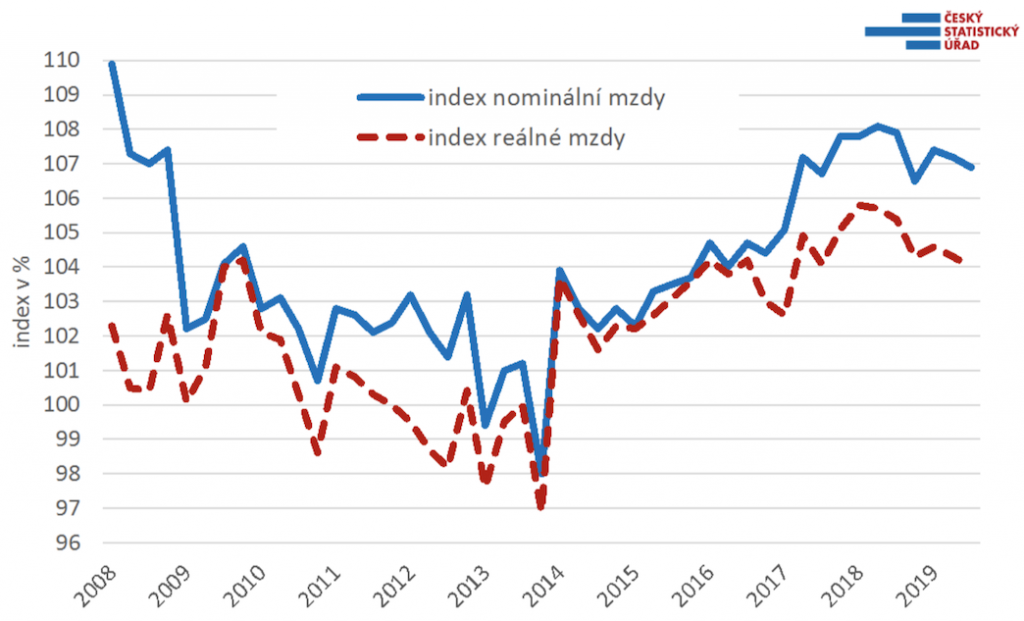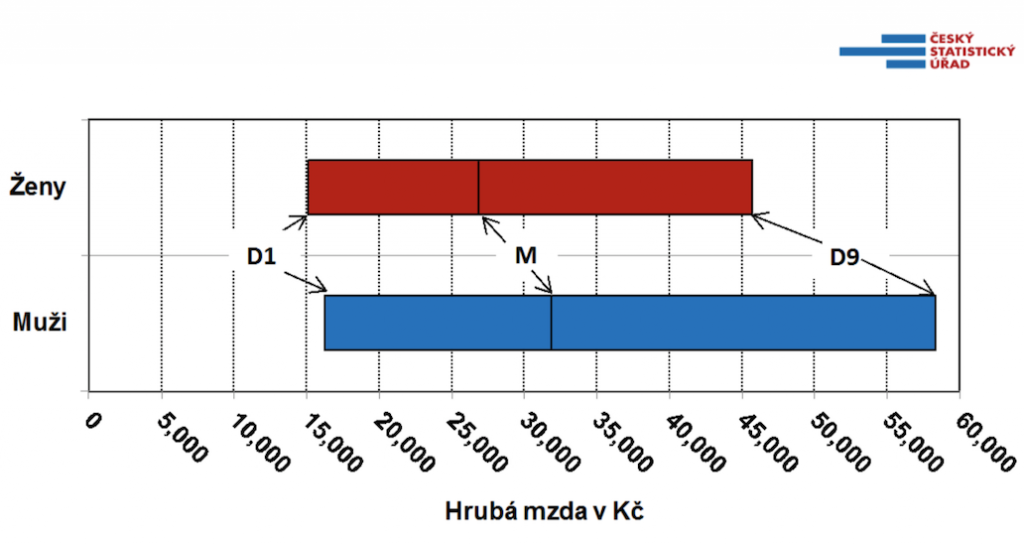The latest figures from the Czech Statistical Office (CSO) for the third quarter of 2019 show real wages continuing to grow. The average monthly wage across the Czech Republic is now CZK 33,697, whilst in South Moravia, it is CZK 32,547. These figures also highlight that women on average earn 19% less than men. Photo: CG / Brno Daily.
Czech Rep., Dec 9 (BD) – The average wage is now CZK 33,697, a year-on-year increase of CZK 2,163. This figure is calculated from the total amount of wages paid (including overtime, bonuses, etc.) divided by the number of workers per month. However, the structural earnings statistics look at wages by individual and they show that about two thirds of employees earn below the national average.
“About two thirds of employees earn below the national average.”
Wage growth by sector varied quite widely but all sectors, except public administration and defence put on increases of at least 5%. The undoubted star performer was education which increased by 11.1%. The highest average monthly wages are to be found in information and technology (CZK 57,785), followed by finance and insurance (CZK 56,191) and the electricity, gas, heating and air-conditioning supply sectors (CZK 46,376); this is after increases of 5.5%, 8.8%, and 7.1% respectively.
“The highest average monthly wages are to be found in information and technology (CZK 57,785), followed by finance and insurance (CZK 56,191).”
At the other end of the scale, in restaurants and hotels, the average wage increased by 6.9% but remains the lowest wage (CZK 20,214) of all sectors. The second lowest average wage is in administrative and support services, which grew by 7.9% to CZK 22,639. In trade (wholesale and retail trade; repair and maintenance of motor vehicles), the average wage increased by 6.8% to CZK 31,702. Wage growth was generally weaker in industry, with the highest increase of 6.1% in manufacturing, to CZK 32,917. In agriculture, forestry, and fisheries, wages increased by 7.4% to CZK 27,961. This may in part be because the working time statistics show that the third quarter of 2019 was characterized by the higher number of hours worked, compared to the same period a year earlier – the average employee worked almost four hours more per month.

The median wage level (the mid-point between the highest and lowest wage) for the same period was also calculated by the CSO using a statistical model. This produced a median of CZK 29,549, which was CZK 1,863 (+ 6.7%) higher than in the same period a year earlier.
In addition, the figures revealed a significant difference between the genders; the median wage for men was CZK 31,909 and for women CZK 26,887, which represents a difference of 19%. At the same time, the wages of men showed a much wider range than that of women. The upper decile in women was CZK 45,728, whereas for men it was CZK 58,338, which is 28% higher. At the lower end, the difference is less apparent, with women having a lower decile of CZK 15,139 and men CZK16,234, which is 7% higher.

At the same time, extreme deciles were calculated. The wage margin remained wide, the tenth of employees with the lowest wages earned less than CZK15,680, while the top ten percent had wages above CZK 52,531. Low wages, however, increased somewhat faster than higher wages, the lowest decile increased by 8.5% year-on-year whilst the upper decile increased by 7.0%.
Get the news first! Subscribe to our daily newsletter here. Top stories of the day in your mailbox every morning.







